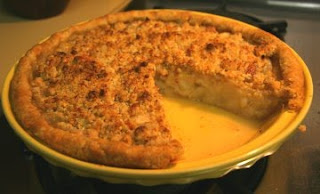 |
| Hachiya Persimmons |
It is now early November and after a long dry summer we are enjoying all things Fall - the cool weather, the hills turning green, the smell of damp earth, and now, ripe persimmons. We have two types, the heart shaped Hachiya and the tomato shaped Fuyu. Both are delicious but very different in their ripening requirements.
Unripe Hachiyas have very high tannin content and taste terribly astringent in that stage. They must be allowed to ripen completely until the skin is translucent and they are as soft as water balloons. When fully orange but still firm they can be picked and allowed to finish ripening off the tree. (Tip: Enclose them in a paper bag with an apple or banana. These fruits give off natural ethylene gas which speeds ripening.) When fully ripe they taste like fruit syrup, super sweet and delicious. You can use them in persimmon cookies or cake, or just spoon the gelatinous pulp over oatmeal or ice cream.
 |
| Fuyu persimmons |
Fuyus on the other hand can be eaten when still crisp-firm, or left to soften further. Once fully orange they are very sweet and can be eaten like an apple, sliced up into Waldorf or green salads, used to make chutney, or sliced on top of cereal or pancakes. One of our favorites is a simple fruit appetizer of peeled and sliced Fuyus sprinkled with fresh lime juice. Since the persimmons are sweet and very low acid, the addition of the lime juice really sets them off. This dish always amazes guests!
 |
| Sliced Fuyus and lime |
Cover crop update
Timely fall rains and warm days have provided perfect conditions for the cover crop seed to sprout in the orchard floor. With adequate winter rains the seedlings will become a tall dense stand of nutrient rich plant matter by next spring. We will then mow it down to cycle it back into the soil for grow-it-yourself fertilizer. In the meantime we watch the weather forecasts hoping for more rain.
















